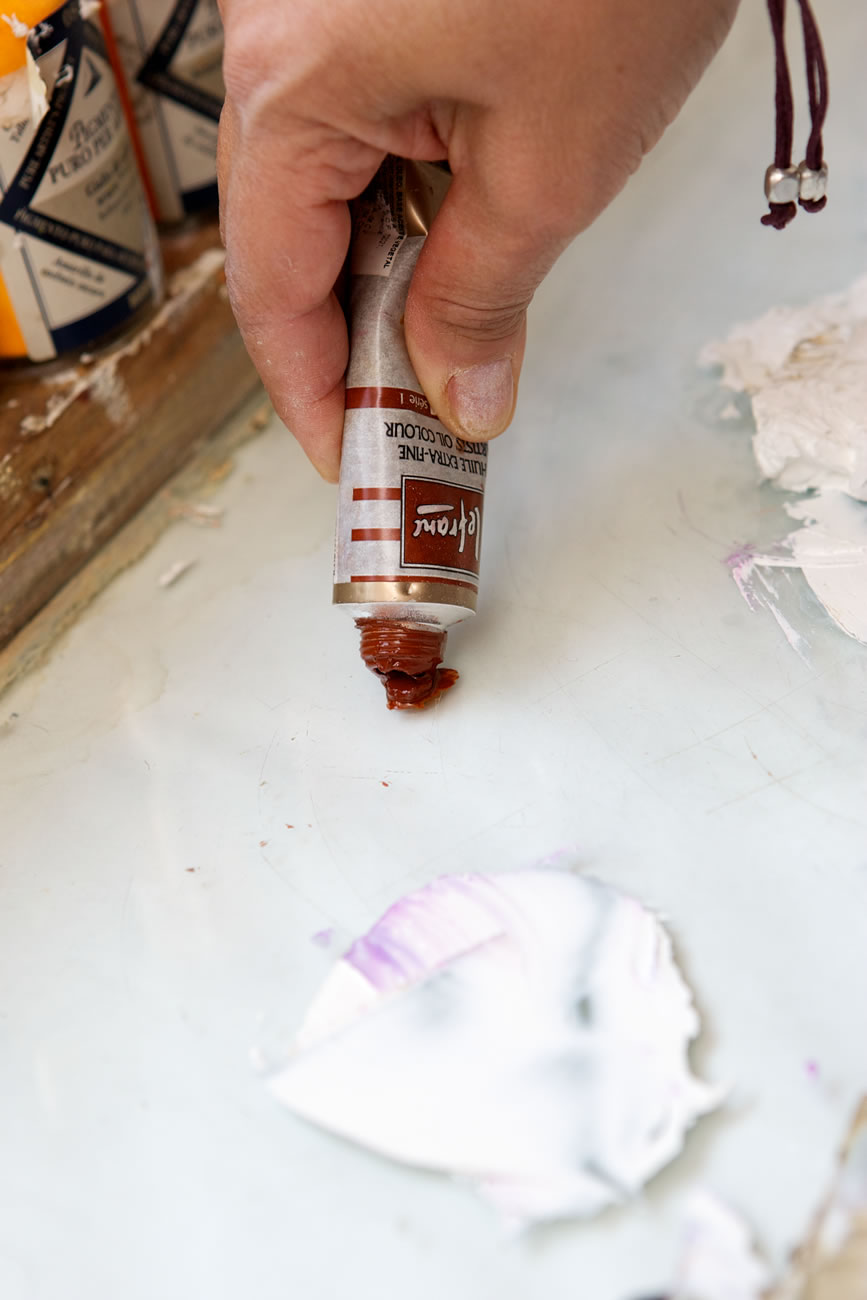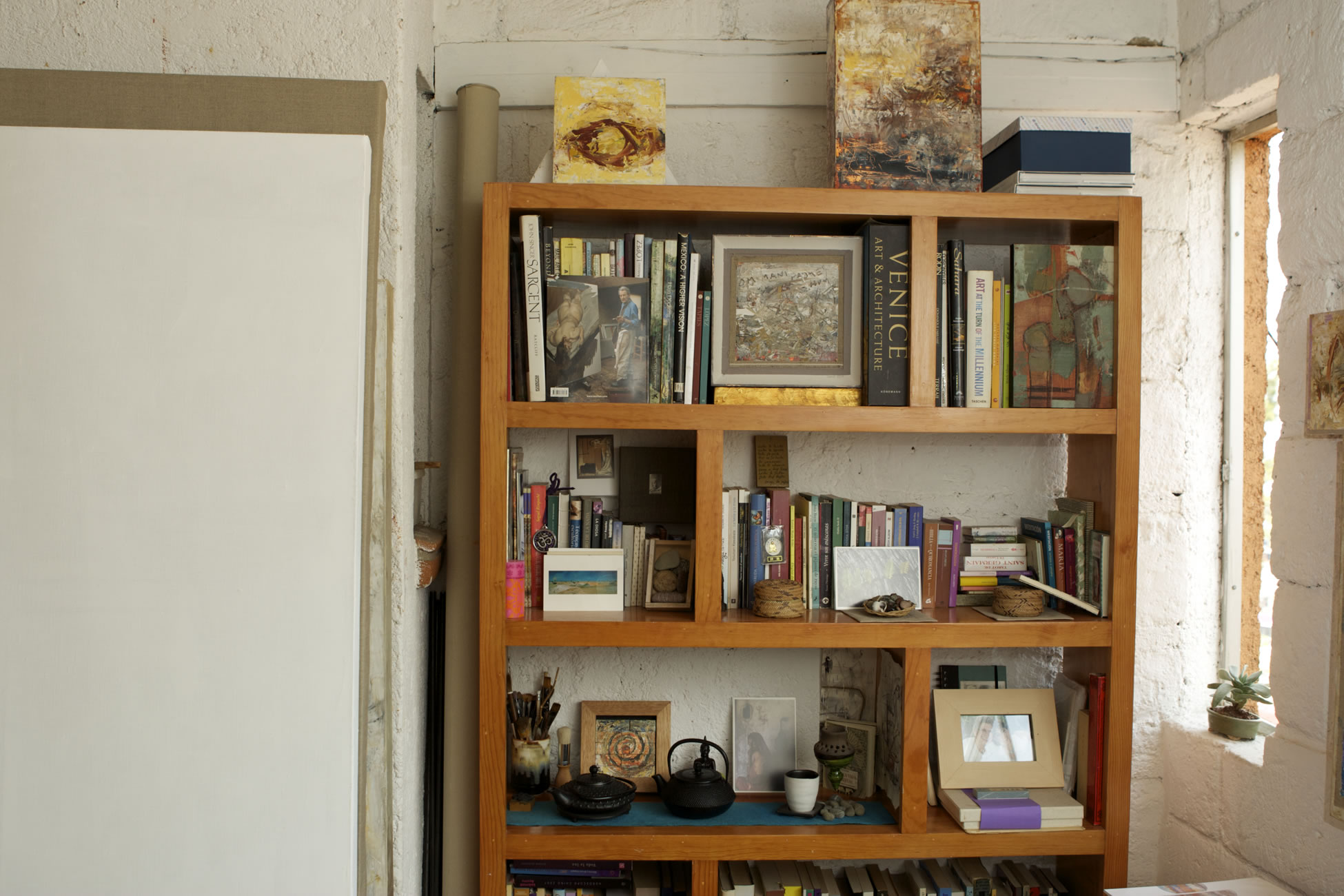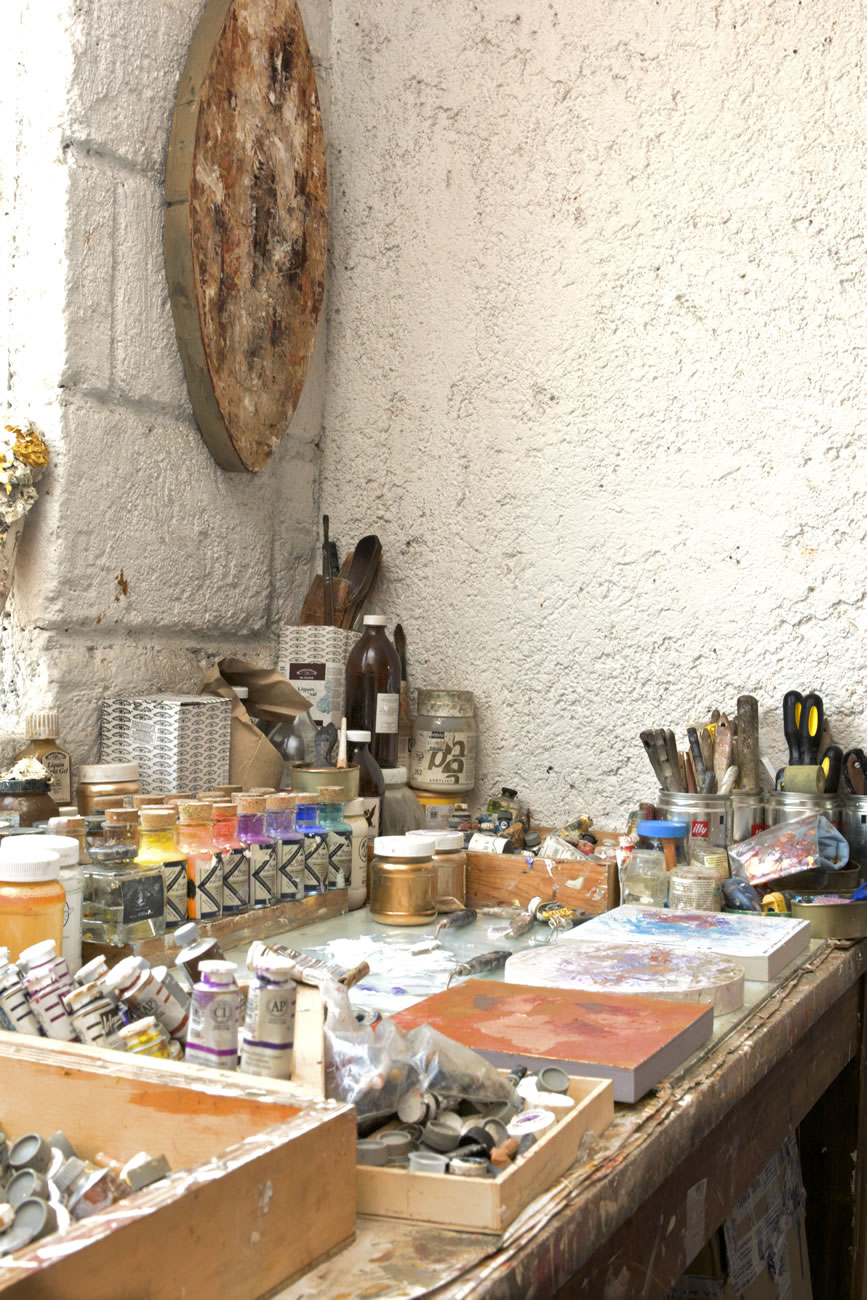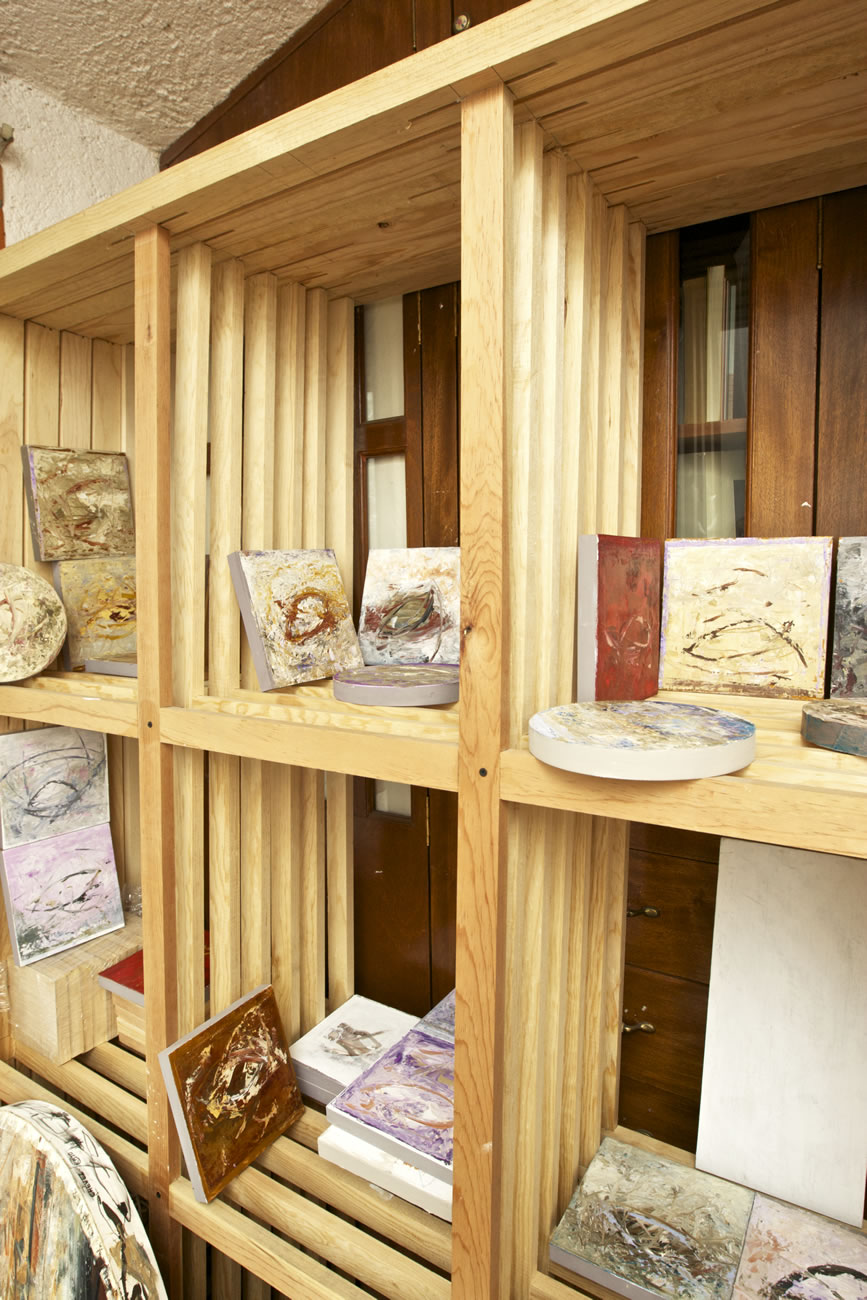Mucho de la vida yace escondido bajo las capas superficiales de nuestro entendimiento y percepción. Nuestros sentimientos y memorias permanecen en capas en la espesa textura de la experiencia. Y por tanto a menudo actuamos ciegamente y tratamos de alcanzar un entendimiento de lo que está sucediendo en nuestros pensamientos y actos. Aquí, las artes son esenciales pues revelan mucho de lo oculto e inconsciente. Nos dejan saber que la vida está hecha en capas y llena de invisibles, misteriosos y potentes elementos que son tan bellos como en ocasiones amenazantes. El buen arte no es sentimental: no nos muestra solamente lo bueno y positivo.
Tan sólo segundos después de haber visto por primera vez el arte visual de Virginia Chévez supe que me encontraba en la presencia de una artista verdadera. Un artista maduro encuentra una puerta visual determinada hacia los misterios –un estilo, una figura, o una imagen que revela algo sobre la naturaleza de las cosas y sobre nuestra propia naturaleza– y la retrata de una manera única.
Sus pinturas muestran con sencillez que la vida está hecha en capas y tiene diferentes “temperaturas”, desde el rojo vital, sangriento hasta los meditabundos, fríos grises y blancos. Ver una de sus pinturas es asomarse a un espejo que refleja aquello de lo que estamos hechos. O es como observar una rebanada de la Tierra, una imagen de nuestra propia profundidad.
Ella también tiene una aguda conciencia de la interacción entre el arte y los espacios en que vivimos. Desde el principio, sus pinturas dialogan con el mundo habitado. Éstas contribuyen a la profundidad, el misterio y lo oculto. Trabajan bien con los espacios y objetos de su ambiente, porque abren caminos para que los misterios sean revelados e incluidos en nuestras percepciones. Entramos a una habitación donde su pintura está presente, y tenemos una percepción completa de nuestro mundo. Su trabajo completa el decorado, invitando a la profunda psique a participar.
Su trabajo también le habla al alma profunda del espectador, educando y curando al ofrecer una experiencia más amplia de su mundo. Es como estar despierto y en un sueño al mismo tiempo. El arte sana la brecha entre estas dos dimensiones.
Existe una seria diferencia entre observar una obra de arte en un museo y encontrarla o vivirla en el hogar o trabajo. En este último el diálogo entre el arte y la vida satisface a ambos: la vida está incompleta sin el arte, y el arte sin vida se vuelve aislado y sobre valuado.
Y por lo tanto aprecio profundamente estas imágenes de las pinturas de Virginia Chévez habitando lugares en particular. Es claro que ella comprende el juego entre la vida y el arte, y hace de esta interacción parte de su propio arte. En mi idioma, yo diría que sus pinturas traen alma a los lugares de una manera especialmente vívida y efectiva. O mejor, ellas revelan la profunda alma como cueva que ya está ahí pero invisible.
THOMAS MOORE es el autor del clásico best-seller El Cuidado del Alma y veinte libros más, muchos de ellos best-sellers también. Ha sido monje, músico, profesor universitario, y, por más de treinta años, psicoterapeuta practicante de terapia arquetípica con un elemento espiritual. Sus libros se encuentran en más de veinte idiomas y ofrece conferencias en varios paises. Tres de sus libros han ganado el premio Libros por una vida mejor. Se considera a sí mismo un nuevo tipo de teólogo y es conocido a nivel mundial por su trabajo en ecología y espiritualidad y por sus esfuerzos en hacer una sociedad más llena de alma.
So much of life lies hidden beneath the surface layers of our understanding and perception. Our feelings and memories remain layered in the thick texture of experience. And so we often act blindly and reach for some understanding of what is going on in our thoughts and actions. Here, the arts are essential as they reveal much of what is hidden and unconscious. They let us know that life is layered and is full of invisible, mysterious, and potent elements that are both beautiful and sometimes threatening. Good art is not sentimental: it doesn’t show us only the good and positive.
Just seconds after first seeing the visual art of Virginia Chevez I knew that I was in the presence of a real artist. A mature artist finds a particular visual doorway to the mysteries—a style, a figure, or an image that reveals something about the nature of things and about our own nature—and pictures it in a unique way.
Her paintings show plainly that life is layered and has different “temperatures,” from the vital, blood-like reds to the thoughtful, cooler grays and whites. To look at one of her paintings is to gaze into a mirror that reflects what we are made of. Or it’s like looking at a slice of earth, an image of our own depth.
She also has a sharp awareness of the interaction between art and the spaces in which we live. From the beginning, her paintings are in dialogue with the lived-in world. They contribute the depth, the mystery, and the hiddenness. They work well with the spaces and objects of their environment, because they open ways for the mysteries to be revealed and included in our perceptions. We enter a room where her painting is present, and we have a full perception of our world. Her work completes the setting, inviting the deep psyche to participate.
Her work also speaks to the deep soul of the viewer, educating and healing by offering a fuller experience of the viewer’s world. It’s like being awake and in a dream at the same time. The art heals the breach between these two dimensions.
There is a serious difference between looking at a piece of art in a museum and encountering it or living with it in a home or at a workplace. In the latter the dialogue between art and life satisfies each: Life is incomplete without art, and art without life becomes isolated and overly precious.
And so I deeply appreciate these images of Virginia Chevez’s paintings inhabiting particular places. It’s clear that she understands the interplay of life and art and makes this interaction part of her art. In my language, I would say that her paintings bring soul to a place in an especially vivid and effective way. Or better, they reveal the deep, cave-like soul that is there already but invisible.
THOMAS MOORE is the author of the classic bestseller Care of the Soul and twenty other books, several of them bestsellers as well. He has been a monk, a musician, a university professor, and, for over thirty years, a psychotherapist practicing archetypal therapy with a spiritual element. His books appear in over twenty languages and he lectures in several countries. Three of his books have won the Books for a Better Life award. He considers himself a new kind of theologian and is known around the world for his work in ecology and spirituality and for his efforts to make a more soulful society.































